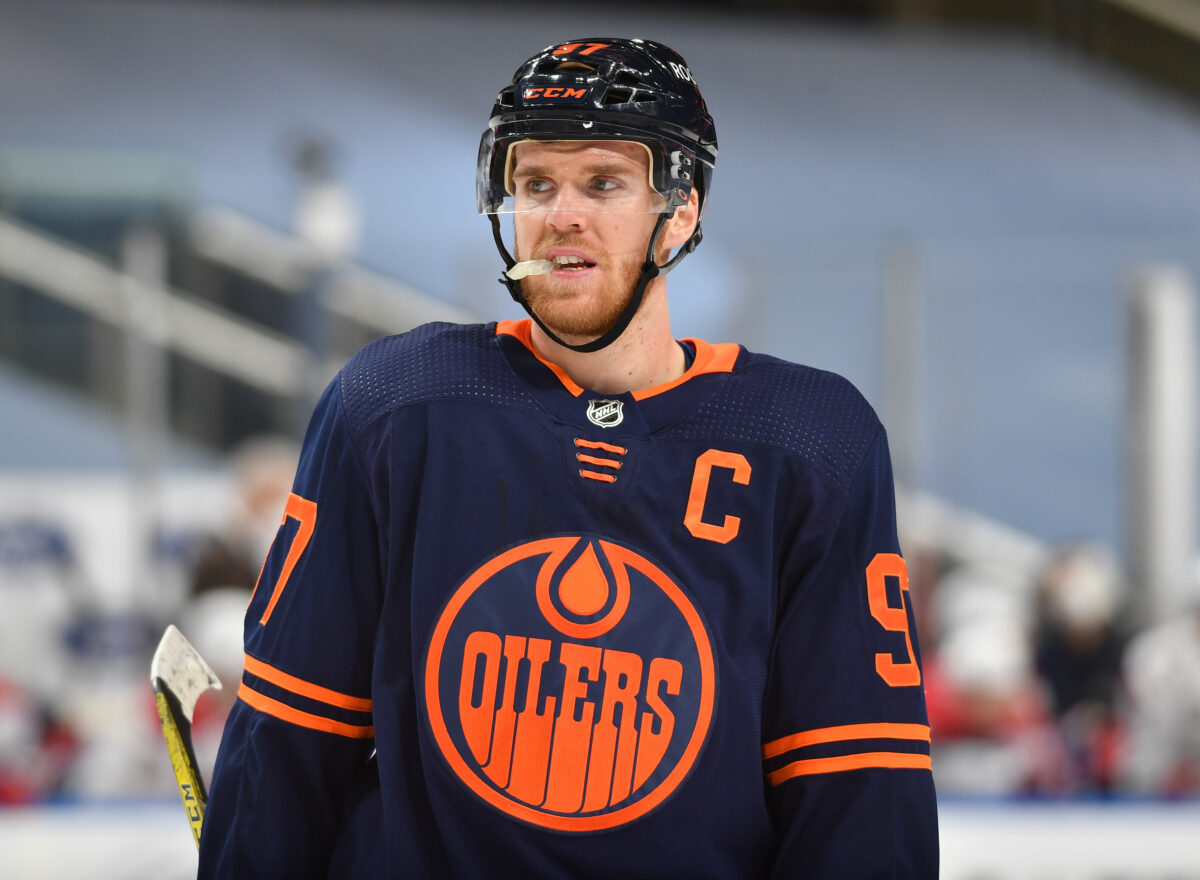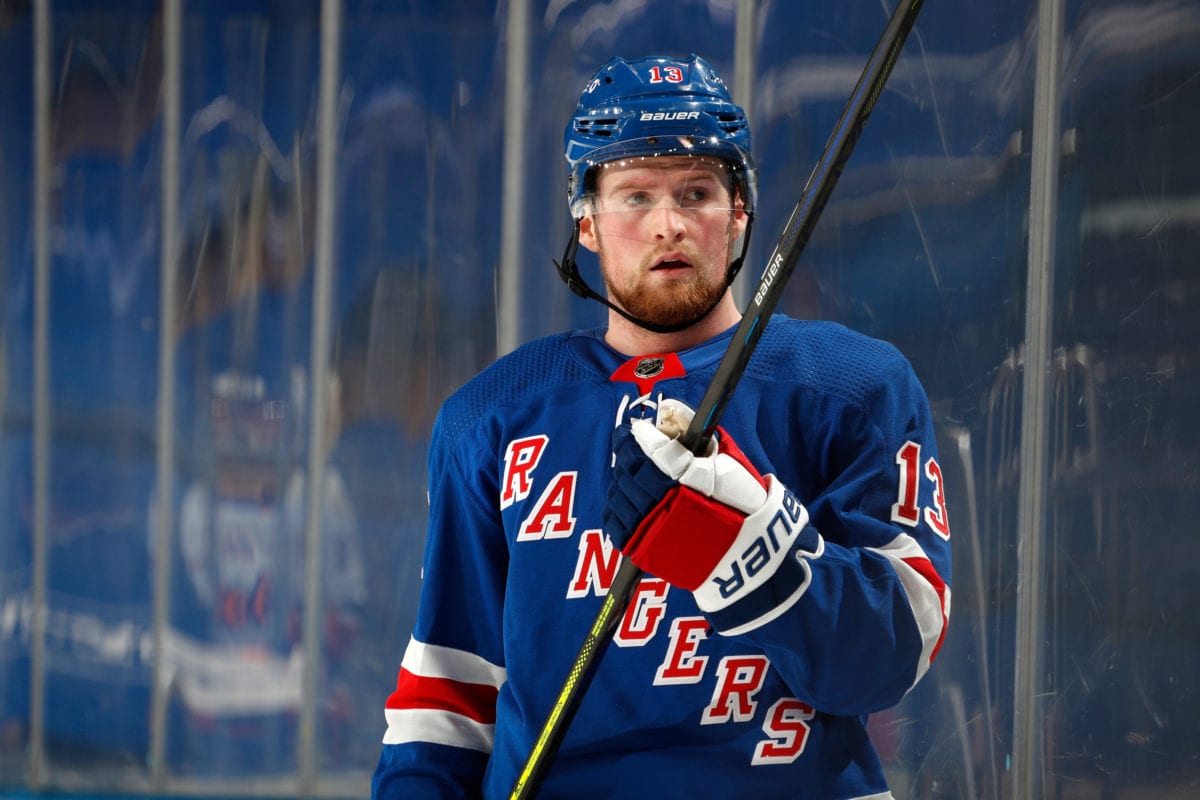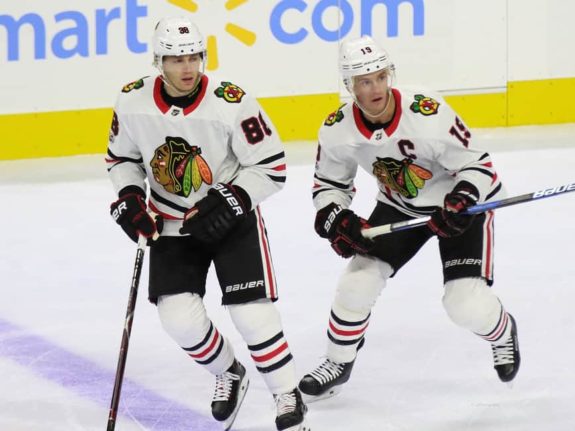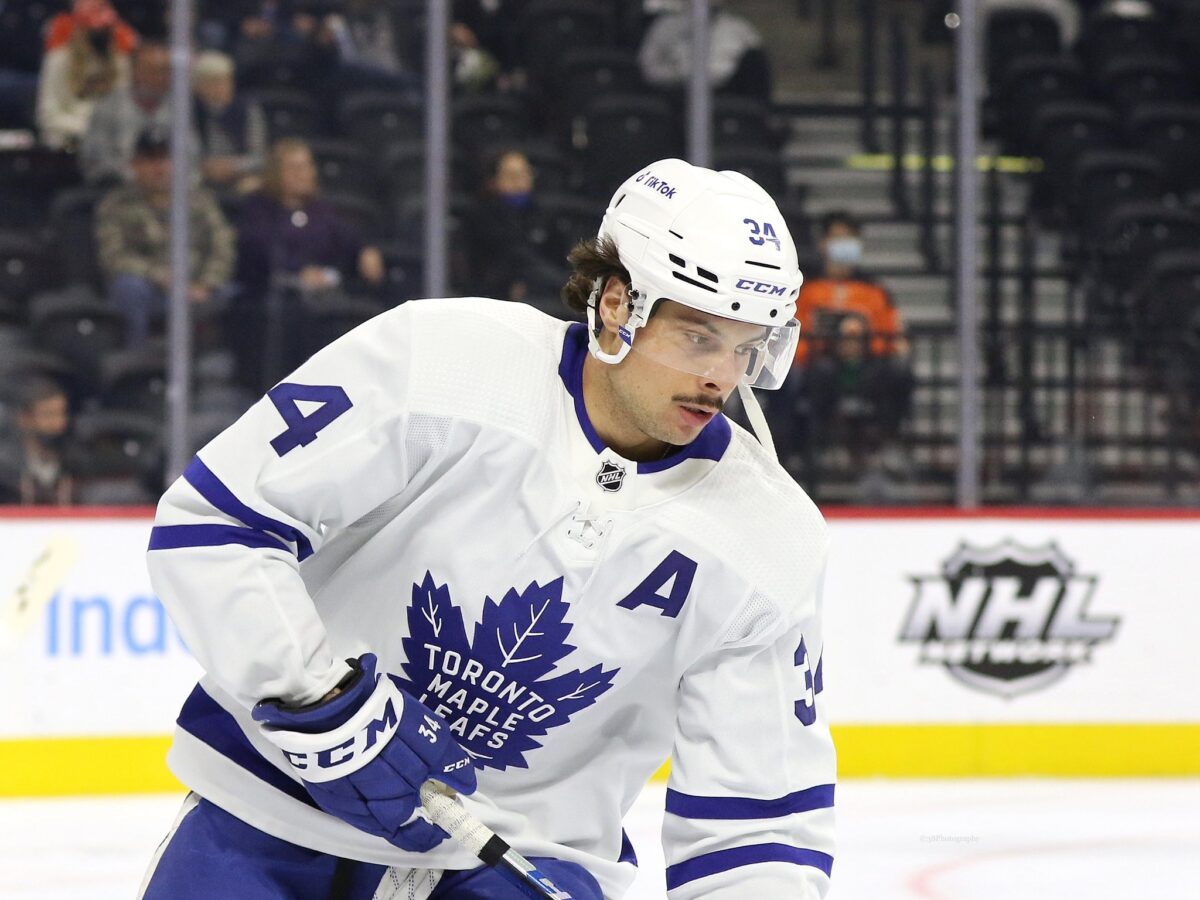Conversations surrounding struggling teams toward the bottom of the NHL standings have already shifted away from the ice and onto the idea of drafting highly-coveted prospect Shane Wright with the first-overall pick in the 2022 NHL Entry Draft in July. Wright will be one of the best prospects to enter the draft in the past decade with the potential to become a generational talent. Even the Montreal Canadiens, the most glorified franchise in the NHL and the reigning Stanley Cup runner-up, have entered the conversation after a 4-11-2 start.
“I think if you’re the Canadiens now, you’re punting on the season. You’re all in for Shane Wright. That’s what I would do.”
–Elliotte Friedman of SportsNet
The Arizona Coyotes, Ottawa Senators, Buffalo Sabres, and even the revamped Chicago Blackhawks (among others) will also come up in conversations about “tanking” the rest of the season with the hopes of increased odds in the NHL Draft Lottery and the opportunity to select Wright. The notion of tanking has become a trendy talking point among fan bases of losing teams around professional sports. Trendy phrases like “Suck for Luck” and “Winless for Wiggins” rang through the fan bases of bottom-feeder teams in the NFL in 2012 looking to draft Andrew Luck and NBA teams in 2014 hoping for Andrew Wiggins. NHL fans joined the sentiment with “Lose for Hughes” in 2019.
The counterintuitive encouragement of losing exists based on the logical concept that taking one step backward can enable two steps forward. However, tanking as a means to joining the conversation as a Stanley Cup contender is an oversimplified concept that brings five complicated variables with it.
1. Players Don’t Tank
NHL players undoubtedly understand the value of picking high in the draft. They know that the Pittsburgh Penguins drafted Marc-Andre Fleury first overall in 2003, Evgeni Malkin second overall in 2004, and Sidney Crosby first overall in 2005. They know the Blackhawks selected Jonathon Toews third overall in 2006 and Patrick Kane first overall in 2007. They’re fully aware that the two franchises raised the Stanley Cup in six of the nine seasons from 2008-09 through 2016-17 thanks to the contributions of those top picks.

However, Jeff Marek also spoke with Friedman about the strategy of tanking and how it doesn’t apply to players.
“Players in the NHL don’t care about the draft. They’re not in the green bananas business. They’re in the wins business. They don’t care about the draft. If they give up a first-round pick to bring in a player that’ll help them, they say ‘do it’ every single time.”
-Jeff Marek of SportsNet
Job security in the NHL doesn’t allow for players to look far down the road. Pittsburgh’s players in 2002 weren’t worried about the organization winning Cups in 2009, 2016, or 2017. Chicago’s players in 2006 didn’t plan on helping the organization acquire the two centerpieces that would lead the team to three Cups down the road either. Tanking, if it’s employed, is a strategy of management and how they invest (or don’t invest) the finite amount of resources they have into one season.
2. The NHL Draft Lottery
If a team “successfully” tanks and finishes with the least amount of points in the NHL, they don’t automatically get the first-overall pick. They get the best odds to land the pick based on a formula that is supposed to be randomized. The new format of the lottery also prevents teams from loading up on first-overall picks in rebuilds that span over multiple seasons, which happened when the Edmonton Oilers picked first in 2011, 2012, and 2015.

Sabres fans openly rooted for their team to lose in “the great tank battle of 2015,” as coined by Sean McIndoe on The Athletic Hockey Show. They rooted for the Coyotes, another team in the mix for the top pick, to beat the Sabres in Buffalo. The Sabres missed out on selecting top prospect Connor McDavid after losing the lottery. Even after landing a tremendous consolation prize in Jack Eichel, the franchise failed to move forward. They traded their expected franchise savior two weeks ago after missing the playoffs in each of his six seasons with the team. Buffalo and Arizona are still in the bottom tier of the NHL, having the same conversation about Wright that they had about McDavid and Eichel.
3. Prospect Development in the NHL
Players selected at the top of the draft commonly fare better in their NHL careers than players drafted below them. However, this obvious statement of fact is far from linear. As you’ll hear acknowledged on The Hockey Writers Prospect Corner, top picks are never a sure thing. The last five NHL seasons have proven that emphatically.
Related: Shane Wright Could Join Elite Club in 2021-22
Most scouts considered the 2017 draft to be top heavy. Expectations for Nico Hischier and Nolan Patrick drastically exceeded those of all other prospects. Hischier, the first-overall selection of the New Jersey Devils, is still developing in his fifth season at age 23. Patrick turned out to be a disastrous second-overall pick by the Philadelphia Flyers. Miro Heiskanen, Cale Makar, and Elias Pettersson went with the next three selections, and they’ve all outperformed the previously renowned top-two prospects and become franchise centerpieces for their respective teams.

Three years after being selected first overall, Rasmus Dahlin doesn’t look like a franchise-defining NHL talent for the Sabres. Jack Hughes, who the Devils selected first overall in 2019, will also continue his development in the coming seasons without entering the conversation as a superstar in the immediate future. The New York Rangers selected Kappo Kakko second overall in 2019 and Alexis Lafrenière with the top pick in 2020. Neither forward has broken out from the beginning of his NHL career.
All of these recent top-two selections still have legitimate opportunity for growth throughout their respective careers. However, none of them burst onto the NHL scene with performances that made other franchises with picks in the top half of the first round in corresponding drafts wish they had tanked the preceding seasons to get the top prospects.
4. Lengthy NHL Rebuilds With No Guarantees
NHL general managers work with a limited amount of resources to spend, especially in the salary cap era of the NHL since 2005. This reality sometimes forces the allocation of resources toward future seasons in a long-term rebuilding process. Rebuilding teams don’t concentrate on the season at hand and instead hope to pick high in the draft, allow young players to develop with no pressure to compete for the playoffs, and conserve cap space to position themselves to acquire veterans down the road.

The lure of a player like Wright might entice a team like the Canadiens to break up their current mix of veterans in favor of a rebuild. However, the lengthy commitment to rebuilding an NHL franchise must be in consideration. The Detroit Red Wings committed to a rebuild once stars like Pavel Datsyuk and Henrik Zetterberg declined. The Original Six franchise that won four Stanley Cups from 1997-2008 with incredible Hall of Fame talent has now missed the playoffs five seasons in a row. They’re faced with the difficult challenge of catching up to Atlantic Division powerhouses like the Tampa Bay Lightning, Boston Bruins, and Toronto Maple Leafs.
McIndoe summarized the sentiment surrounding Buffalo’s rebuild that centered around the Eichel pick.
“2015 feels like a long time ago. We waited a long, long time to reap the rewards. We never did. And now here we go again”
-Sean McIndoe
Even Arizona’s rebuild, which is still thought of positively by some, has taken a long time and led them into the bottom tier of NHL franchises. A lot of the optimism stems from Arizona’s plentiful future draft capital. They will likely use these picks to select players who are currently under the age of 18, so they still have a long time to wait before they reach the age range when NHL players can reasonably be expected to contribute to contending teams.
5. Team Construction Goes Beyond Superstars
If the management of an NHL franchise tanks the 2021-22 season, wins the draft lottery, develops Wright into a star player, and successfully rebuilds with him as their centerpiece with no devastating obstacles in the process, they will reach the point of teams like the Maple Leafs and the Oilers. Both these high-profile Canadian markets boast former number-one overall picks who have developed into superstars in the top tier of NHL talent. Auston Matthews and Connor McDavid are two of the best NHL players drafted in the past 10 years, but their teams have still combined for a 1-8 record in the nine playoff series the two superstars have played in.
The competition for playoff spots between 32 teams and the rigors of the two-month postseason make the Stanley Cup the most difficult trophy in professional sports to win. The Oilers and Maple Leafs are both in good position to compete, but neither franchise expected to be waiting this long to achieve legitimate playoff success when they drafted their respective superstars in 2015 and 2016. The Colorado Avalanche are similarly well-positioned with an impressive collection of talent centered around 2013 top pick Nathan MacKinnon. However, they have failed to reach the Western Conference Finals in disappointing fashion in each of the past three seasons.

The cases of the Penguins and Blackhawks demonstrate the value of picking at the top of the draft, but emulating the franchise trajectory of both teams by intentionally tanking a season brings a long list of variables. Could Shane Wright take the NHL by storm and lead the team that drafts him to multiple Stanley Cups in the way that Crosby and Kane did? Yes. However, NHL teams and their fan bases need to realistically evaluate whether or not they’re willing to sacrifice all effort in competition for the entirety of the first 82-game NHL season since 2018-19 when the reward is very far from a guarantee.
